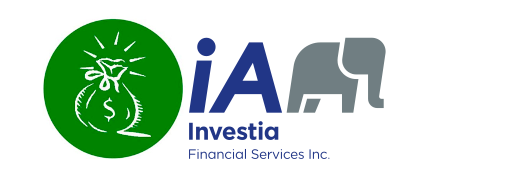
Oct. 6, 2022
Investing in the stock market is a good way to build wealth over time, but it can feel a little intimidating to get started. Understanding how the market works, the type of investments you can purchase through it and your risk tolerance can help alleviate that stress. Here’s a primer on the stock market, along with some insights from personal finance and investing experts.
What are stocks?
Holding stocks, also known as shares or equities, means you have fractional ownership of a company traded on the stock market. It entitles you to benefit from the company’s earnings, through dividends and/or appreciation in the stock price.

iStock-1302851565.jpg
There are two types of stocks, which afford investors different rights:
Common shares give the holder the right to vote on company matters such as a major acquisition or new board of director appointments. However, not all common shares pay dividends, through which the company’s earnings are distributed to shareholders. Even with those that do, dividend payouts can vary and are dependent on the company’s profitability.
Holders of preferred shares, on the other hand, do not have voting rights but receive fixed dividend payouts each quarter and are paid ahead of common shareholders. If the company goes bankrupt, preferred shareholders would have a higher claim on its assets.
Companies will issue stock when they need to raise funds to finance business growth. They will also sometimes buy back shares if they want to create additional value for shareholders – with fewer shares available on the market the company effectively boosts demand, and therefore the stock’s price.
What is the stock market and how does it work?
The stock market is a giant marketplace for purchasing and selling stocks. Though people often call individual exchanges “the stock market,” it isn’t so much a singular entity as it is a collection of exchanges around the world. Unlike decades ago when traders made sell and buy orders on the trading room floor, today trading is done mostly electronically and some exchanges have closed their trading halls altogether.
The first stock market-like institution was founded in Antwerp in 1531 – though, at the time, it only dealt with business, government and individual debt, rather than shares in companies. Buying company stock emerged in the 1600s, when England, the Netherlands and France began trading with the East Indies. The long ocean voyages were expensive, and so explorers and merchants formed limited liability companies to raise funds from investors, who would receive a chunk of the profits proportionate to their investment.
Today, the largest stock exchange is the New York Stock Exchange, with a market capitalization of US$27.6-trillion at year end 2021. Market capitalization is the total value of the outstanding shares of all the companies on the exchange.
TMX Group Ltd., a publicly traded company, operates the TSX, Venture and Montreal exchanges. TMX Group stock exchanges collectively rank 10th in the world by market cap, at $3.3-trillion.
Companies can be listed on multiple exchanges, and Canadian investors can purchase shares in companies listed on foreign exchanges. You can do this directly through your broker or online brokerage, but remember the transaction must be done in the relevant foreign currency so if the exchange rate moves against you your returns can suffer. You can also buy through Canadian depositary receipts. CDRs represent shares of global companies but are traded in Canadian dollars on Canadian stock exchanges. They also enable you to buy fractional shares, making companies with high stock prices far more accessible.
How can I invest in the stock market?
There are three main ways to put your money in the market: You can work with a licensed professional, go through an online brokerage or use a robo-adviser.
For guidance, hire an advisor or broker
If you want guidance, you can work with a licensed financial adviser or broker to purchase stocks. Only those licensed by the Investment Industry Regulatory Organization of Canada can trade on your behalf. Advisers licensed by the Mutual Fund Dealers Association of Canada can sell you a mutual fund, another way to gain exposure to the stock market, but can’t buy or sell securities for you.
What is a stock market index?
A market index tracks the performance of a specific group of stocks that are meant to represent either a sector or the broader market, and it allows investors to understand the overall health and direction of the market.
Each stock market index takes a different approach or formula to determining which companies to include. The S&P 500, for instance, is a market cap-weighted index of the 500 largest public companies in the United States. To be in the index, companies need to have a minimum market cap of US$14.6-billion, trade on the stock market for at least a year and be listed on a select group of exchanges, among other requirements. Its Canadian equivalent, the S&P/TSX Composite Index, requires possible entrants to be based in Canada and meet certain market capitalization and liquidity thresholds.
What are exchange-traded funds?
Exchange-traded funds (ETFs) are collections of securities that aim to replicate an index or sector’s performance as closely as possible. They’re similar to mutual funds in that they are a basket of assets, but they can be traded daily on a stock exchange. Unlike mutual funds, which are typically managed by an investment professional aiming to beat the market – and so come with higher fees – most ETFs are passively managed.
Lisa Kramer, a finance professor at the University of Toronto’s Rotman School of Management, noted that investors should be aware that not all ETFs are balanced or diversified: While some track the overall Canadian or U.S. stock markets or a combination of different countries’ stock exchanges by holding a wide array of stocks, others are focused on one sector or region, which can be riskier. Investors can also purchase ETFs tied to the price of gold, or to one or more cryptocurrency.
What can’t I buy on the stock market?
You can’t purchase bonds on the stock market. Bonds – a loan from an investor to a government or corporation with a fixed term for the borrower to repay the investor with interest – can be purchased from a bond broker or directly from an issuing government. However, you can buy bond ETFs on an exchange.
It’s also not possible to buy mutual funds on the stock market, though they do give you exposure to it through their underlying investments.
What are bull and bear markets?
A bull market refers to a period of months or years when stock prices, as measured by an index, rise by 20 per cent from the most recent low, and investors are broadly optimistic about the state of the market. The longest bull-run in history began in March, 2009, and ran for 11 years, until the onset of the pandemic in March, 2020. The name comes from the way a bull attacks, by thrusting its horns upward.
Like the bull market, bear markets are named for the way the animal attacks, in this case, with paws swiping down. Bear markets occur when stock prices, as measured by an index, fall by 20 per cent or more from their most recent peak, and is typically a period of pessimistic investor sentiment.
How are stocks priced?
Company fundamentals are the first and most important factor determining a stock’s price. These include the product or service that the company provides, the consumer demand for its offering, the quality of its management team, and financial performance metrics such as revenue growth, earnings per share, and dividends.
The broader economic picture also plays a role in individual companies’ stock prices. The pandemic-created supply chain woes are a prime example: If a company has a product in demand but can’t access the raw inputs required to make it, that can affect its cash flow and its stock price. Inflation and interest rates also play a role: A higher interest rate that affects companies’ ability to borrow money at a reasonable rate hits growth companies – like those in the tech sector – particularly hard.
The third piece of the puzzle is investor sentiment, which can help to drive market bubbles or crashes regardless of a company’s fundamentals – like the hype-driven stratospheric rise in GameStop Corp.’s stock price in January, 2021.
“The really rapid market movements or big swings in market prices … can be amplified by people overreacting to the news and it becomes self-fulfilling,” Rotman’s Ms. Kramer said. “We like to think markets are pretty efficient and [sentiment] shouldn’t be relevant, but stocks can deviate from fundamental value for extended periods of time.”
What are the pros and cons of investing in equities?
While stocks are considered a riskier asset class, they do have the power to deliver significant returns. The S&P 500 has averaged a 10.46 per cent annualized return since 1926. That’s what’s called the equity risk premium, or the reward investors should expect for taking on greater risk and investing in equities rather than a risk-free investment like government bonds. It’s a major reason why so many Canadians have invested in stocks, ETFs or mutual funds over the past few decades.
But stocks can fall or plateau for significant periods of time. Since 2000, for example, investors have faced two bear markets longer than a year: the dot-com crash from 2000 to 2002, and the 2007 to 2009 financial crisis.
Ensuring your investment portfolio is diversified – that it includes a mix of equities from different sectors, countries and company sizes, and also includes other investments like bonds – can help to insulate against gyrations in the market, particularly in today’s more challenging market conditions, said Martin Pelletier, senior portfolio manager at Wellington-Altus Private Counsel in Calgary.
John Heinzl, The Globe’s Investor Clinic columnist, has repeatedly stressed the value of the tried-and-true buy and hold strategy rather than attempting to time the market. “Too many investors think the way to make money is to buy low, sell high and repeat,” he said. “But if you own a great company … the best approach is often to do nothing.”
Ms. Kramer agreed. “People who try to outperform the market end up getting burned … and underperforming the portfolio returns of people who just did the boring thing.”
So how can I prepare for investing in stocks?
Before you dip your toe in the market it’s important to assess your risk tolerance, Mr. Pelletier said.
Younger investors have a longer time horizon to recoup the losses of bear markets than older investors do, he said, and so have a higher risk tolerance. Similarly, if you’re investing for a long-term goal like saving for a house, retirement or your child’s future education you can afford to take greater risk than someone who will need the money sooner. These factors can help you determine whether to increase or decrease your exposure to equities.
Personality also plays a part, he noted: Those who are much more risk-averse may panic and sell their stocks during a market correction out of a fear of greater price declines and permanently lock in losses that, up to that point, were only on paper.
Ms. Kramer said investors can prepare for market tumult by developing an investment plan and sticking to it, and by mapping out what a hit to their portfolio would look like in dollar terms. “Three per cent loss days aren’t all that uncommon,” she said, adding that if it feels like you’re going to be tempted to sell after such a hit, consider a portfolio that’s a bit safer and less volatile.
This Globe and Mail article was legally licensed by AdvisorStream.
© Copyright 2024 The Globe and Mail Inc. All rights reserved.


